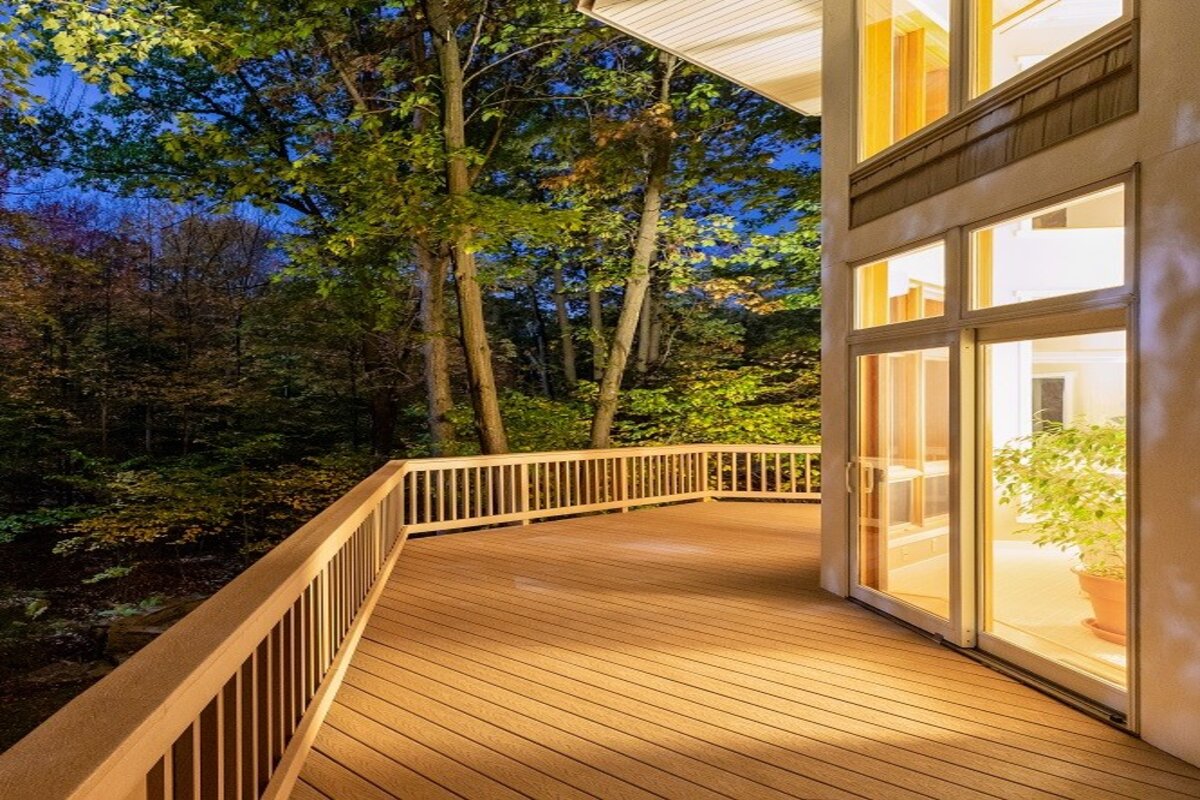Is Composite Decking Cheaper Than Wood? Cost Breakdown

One of the most common questions we hear from homeowners is whether composite decking is actually cheaper than wood. While wood often has a lower upfront cost, factors like maintenance, lifespan, and long-term value should also be considered.
We’ve installed both wood and composite decks throughout Kansas City and have seen how each option performs over time. Below, we’ll break down the key cost factors to help you choose the material that fits your home and budget.
Upfront Material Costs: Composite vs Wood
Average Cost Per Square Foot
When comparing deck materials, many homeowners begin by looking at the price per square foot. Here’s a general estimate based on common materials:
- Pressure-treated wood: $3 to $6 per square foot
- Cedar or redwood: $6 to $9 per square foot
- Composite decking: $8 to $12 per square foot
From a materials-only perspective, composite decking will cost more upfront than pressure-treated lumber or standard cedar. But that doesn’t tell the whole story.
Installation Costs
Installation for both wood and composite decks is fairly similar, although composite can sometimes require additional framing or specialized fasteners, which may slightly increase labor costs. Still, this difference is usually minor compared to the long-term financial picture.
Maintenance Costs Over Time
Wood Requires Ongoing Care
Wood decks need regular upkeep to stay in good shape. That includes:
- Annual cleaning
- Staining or sealing every 1–2 years
- Occasional sanding or board replacements
- Risk of insect damage or rot if not properly maintained
Over a 10–15 year period, homeowners often spend thousands on maintenance for wood decks.
Composite is Virtually Maintenance-Free
Composite decking, on the other hand, doesn’t require staining, sealing, or sanding. Occasional cleaning with soap and water is typically enough to keep it looking sharp. You won’t have to worry about warping, splinters, or insect damage, either.
Longevity and Replacement Costs
Expected Lifespan
- Wood decking: Typically lasts 10 to 15 years before needing full replacement
- Composite decking: Lasts 25 to 30 years or more with minimal upkeep
This difference in lifespan is a major factor in answering the question “Is composite decking cheaper than wood?”. Composite may cost more upfront, but you’ll likely replace a wood deck once or even twice before a composite one shows serious wear.
Warranty Coverage
Most composite decking comes with warranties ranging from 25 to 50 years. Wood, even if pressure-treated, rarely includes a manufacturer’s warranty beyond rot protection.
Total Cost of Ownership: A Side-by-Side Example
Let’s say you’re building a 300-square-foot deck.
| Decking Type | Upfront Material Cost | 10-Year Maintenance Cost | Expected Lifespan | Total 10-Year Cost |
| Pressure-Treated Wood | $1,200–$1,800 | $1,500–$3,000 | 10–15 years | $2,700–$4,800 |
| Composite | $2,400–$3,600 | $200–$300 | 25–30+ years | $2,600–$3,900 |
Over 10 years, a composite often ends up costing about the same or less than wood. Over 20 or 30 years, the savings become even clearer.
When is Composite Decking Cheaper Than Wood?
Situations Where Composite Wins
Composite decking tends to be the better long-term value if:
- You plan to stay in your home for more than 10 years
- You don’t want to spend time or money on yearly maintenance
- You want a deck that resists fading, stains, rot, and pests
- You’re concerned about long-term appearance and performance
When Wood May Still Make Sense
Wood can still be a good option if:
- You’re building on a tight budget
- You enjoy the hands-on maintenance and upkeep
- You plan to move within the next few years
We always talk through these factors with homeowners so they can make a decision based on their priorities, not just price per board.
Final Thoughts: Make the Right Investment for Your Home
Choosing between wood and composite isn’t just a question of cost; it’s about what kind of investment you want to make in your home. When you factor in materials, maintenance, and lifespan, composite often proves to be more affordable in the long run.
If you’re still weighing your options or want to see material samples, we’re happy to help. At Heartland Decks, we guide you through every step of the process so you get the right deck for your home, your lifestyle, and your budget.
Ready to start your deck project? Contact us today for a free design consultation.
Heartland Decks:
Husband Tested &
Wife Approved!
It's Time To Build Your Dream Deck & Give
Your Home the Backyard it Deserves
HEARTLAND DECKS
Office & Showroom
Administrative: By Appt. Only
contractor marketing & lead generation by: kcwebdesigner.com | kcseopro.com

